The Czech Republic's capital and international showpiece, Prague is one of the most popular destinations in Eastern Europe. Its attraction lies in the physical beauty of the city with 600 years of architecture amazingly untouched by war. The centre has been designated a UNESCO World Heritage Site and it demands to be explored on foot, an entire outdoor museum of history and a haphazard mixture of splendid architecture.
In the 14th century Prague enjoyed a reputation of being one of the most important cities in Europe, but after the Second World War it disappeared completely behind the Iron Curtain. Since the 1989 Velvet Revolution and the end of Communism, Prague has thrown off the years of repression with alacrity and is returning to its earlier grandeur, enticing tourists with its fairytale quality and romantic atmosphere. In recent years Prague has also become a popular weekend destination for stag and hen party groups, attracted by the lively nightlife, world-famous beer and low prices.
The historical centre of the city is compact and its attractions are all within easy reach. The core comprises the Castle District (Hradèany) west of the River Vltava, and the Old and New town (Staré Mesto and Nové Mesto) to the east, joined by the famous Charles Bridge. The Castle District situated on the hill overlooking the city incorporates the main attractions, including the Castle itself and the Cathedral. The Old Town is a maze of alleyways, cobbled streets and passages winding their way towards the beautiful Old Town Square, Staromestské NámestÃ. Josefov Ghetto, the old Jewish Quarter, is enclosed within the old town. The New Town, in contrast, is modern and has been laid out in wide boulevards, most famously Wenceslas Square, the fashionable shopping boulevard leading up to the foot of the grand National Gallery.
The city's cultural scene also features high on the list of things to do in Prague, with classical music concerts, opera and ballet, as well as the many art galleries around the city. It is constantly adding small new museums to its summertime list, often strange but curiously interesting. This beautiful city, a 'symphony in stone', built along the river and on the surrounding hills, has never ceased to capture the hearts and imagination of visitors, painters, photographers and poets.
Prague has a cheap and efficient public transport system consisting of an integrated network of buses, trams, metro and a funicular on Petrin Hill. The historic centre is compact and pedestrian-only, but trams offer an inexpensive way of seeing the rest of the city and there are plenty of metro stations in the centre. Tram lines criss-cross the centre and are the best way to get around, after the metro. Buses need rarely be used, as they tend to operate outside the centre and are more irregular. After midnight night trams and buses offer a limited service, usually every hour. Tickets are valid on all modes of public transport, but must be bought in advance and validated before each journey. A number of travel passes are also available; these are the best way to avoid the hassle of different single tickets and need only be stamped once at the start. Prague is inundated with dishonest, unregistered taxi drivers who attempt to rip off tourists. It's best to book taxis over the phone and demand a receipt for the fare before setting out. ProfiTaxi or AAA Taxi are the most reputable companies. A car is unnecessary since much of the city is pedestrianised, parking is a major problem and vehicle crime is rife. Car rental is also expensive.
When Franz Kafka wrote that his home city had ‘claws' that prevented him leaving, he was not paying nefarious Prague a compliment. These days Prague has a similarly magnetic, though much more positive, appeal for the soaring numbers of tourists and business travellers who flock to the Czech capital every year.
Prague is quite simply one of the most stunning cities in Europe, a UNESCO World Heritage listed gem, eulogised as the ‘City of a Thousand Spires'. Prague has become the archetypal post-communist city success story with seemingly not a month going by without another city being hailed as the ‘New Prague'.
This is a city where just ambling around the impressively well-preserved historic core, stopping off for a fortifying glass of one of the excellent local beers, popping into boutique shops or one of the many museums is the real pleasure.
Prague's story goes back to the distant days of the Celtic tribes, as early as 400BC. The city's real golden age commenced when Charles IV of Bohemia was elected Holy Roman Emperor in 1346. The ambitious gothic building programme, including St Vitus Cathedral, Charles Bridge, the University, and the New Town, centred on Wenceslas Square and transformed the city into one of the greatest and most powerful in Europe.
The 20th century brought massive trauma for Czechoslovakia and Prague as the country was occupied by the Nazis during WWII and then spent the best part of five decades subjugated under Soviet communist rule, with all attempts to win greater democracy in 1968's ‘Prague Spring' brutally crushed under the weight of Russian tanks.
The Czech spirit remained undaunted and in 1989, as the Berlin Wall tumbled, the Czechs finally broke free of communism during the ‘Velvet Revolution', which was quickly followed by the ‘Velvet Divorce' as the Slovak portion of the old Czechoslovakia chose to go its own way.
With poet and president Vaclav Havel at the helm, Prague became the hub of the post-communist eastern European revival with expats flocking to the city in the 1990s, quickly developing a buzz that brought comparisons with 1920s Paris.
This post Velvet Revolution buzz has faded to some extent and these days there are as many foreign as Czech voices on the streets with the city massively popular as a tourist destination and as a business hub. In 2004, the Czech Republic joined the European Union, further cementing the city's importance and popularity.
Part of Prague's charm is that it is a rewarding place to visit at any time of year. Winters can be long, harsh and dark, but spring and autumn are often idyllic with summer bringing some very warm central European temperatures.
Whether easing under Charles Bridge on a rowing boat on a balmy summer evening, or trudging across the crisp snow of the Old Town Square and enjoying a glass of mulled wine at the Christmas Market, this slick, but still deeply characterful Czech capital seldom disappoints.




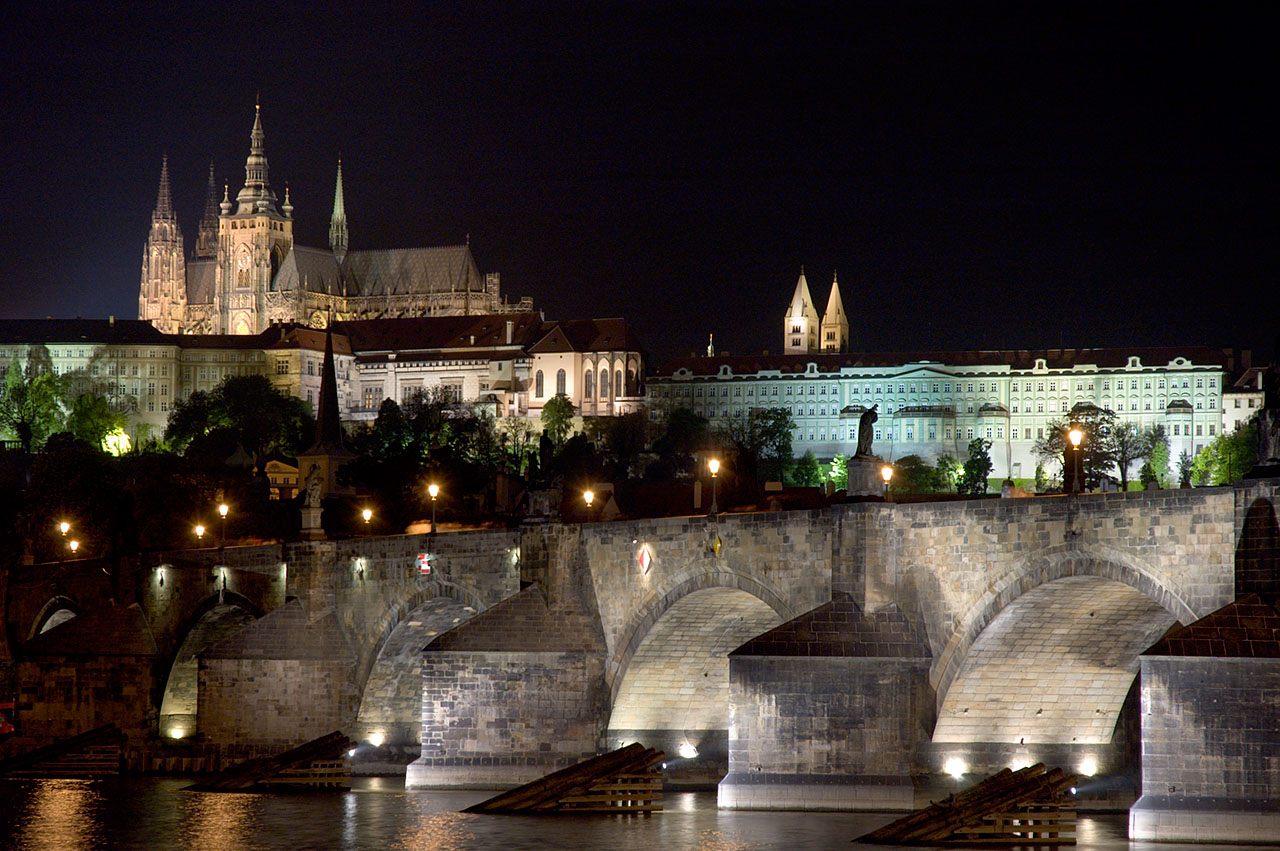

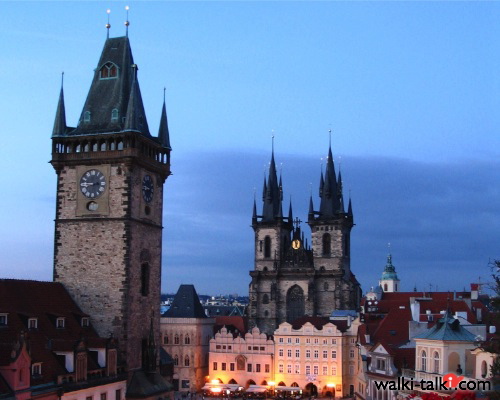



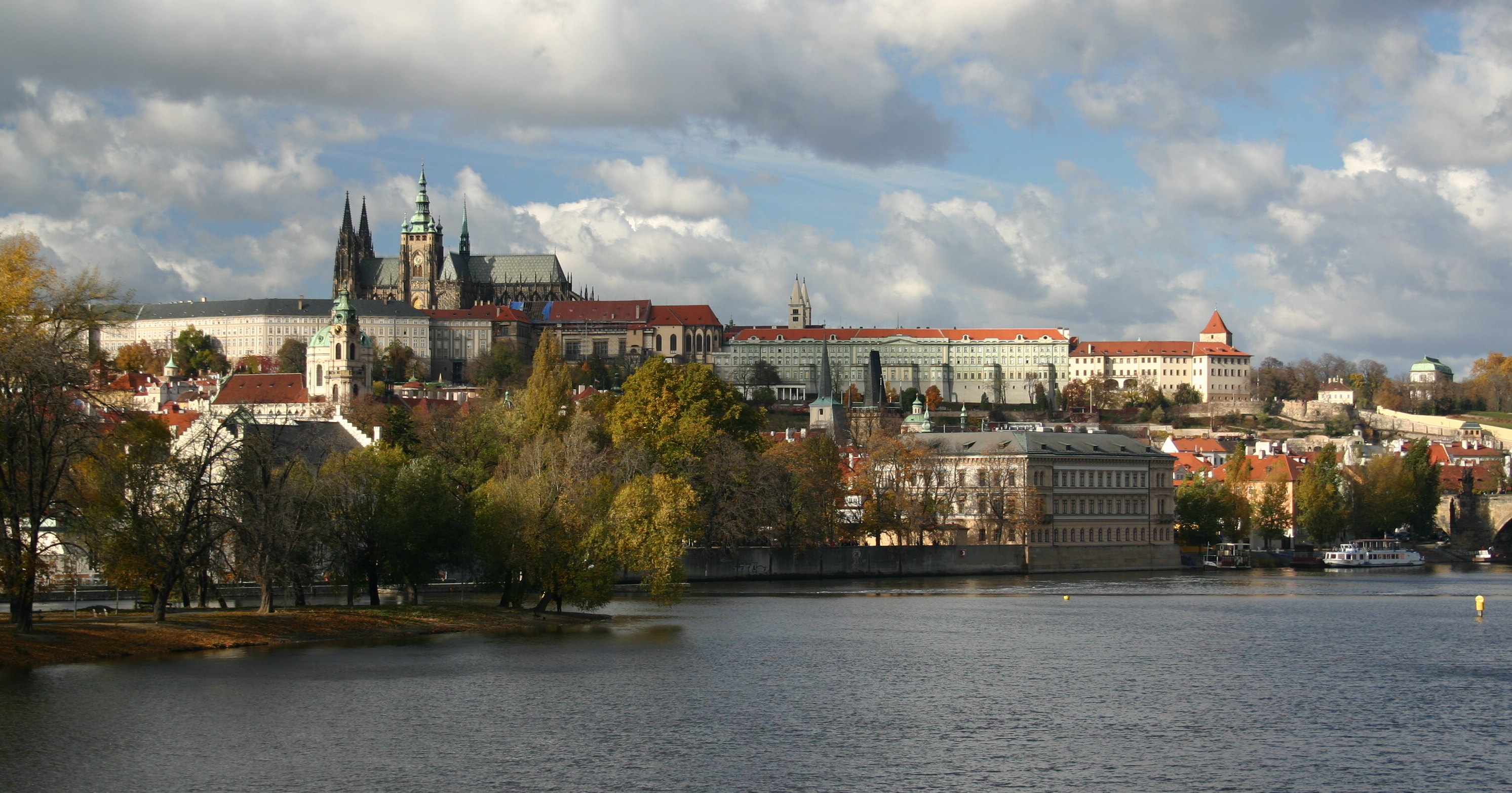
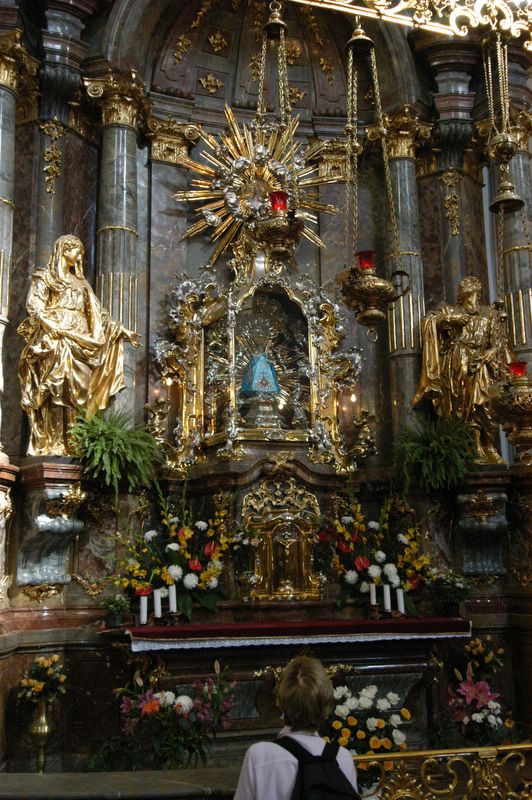
In the 14th century Prague enjoyed a reputation of being one of the most important cities in Europe, but after the Second World War it disappeared completely behind the Iron Curtain. Since the 1989 Velvet Revolution and the end of Communism, Prague has thrown off the years of repression with alacrity and is returning to its earlier grandeur, enticing tourists with its fairytale quality and romantic atmosphere. In recent years Prague has also become a popular weekend destination for stag and hen party groups, attracted by the lively nightlife, world-famous beer and low prices.
The historical centre of the city is compact and its attractions are all within easy reach. The core comprises the Castle District (Hradèany) west of the River Vltava, and the Old and New town (Staré Mesto and Nové Mesto) to the east, joined by the famous Charles Bridge. The Castle District situated on the hill overlooking the city incorporates the main attractions, including the Castle itself and the Cathedral. The Old Town is a maze of alleyways, cobbled streets and passages winding their way towards the beautiful Old Town Square, Staromestské NámestÃ. Josefov Ghetto, the old Jewish Quarter, is enclosed within the old town. The New Town, in contrast, is modern and has been laid out in wide boulevards, most famously Wenceslas Square, the fashionable shopping boulevard leading up to the foot of the grand National Gallery.
The city's cultural scene also features high on the list of things to do in Prague, with classical music concerts, opera and ballet, as well as the many art galleries around the city. It is constantly adding small new museums to its summertime list, often strange but curiously interesting. This beautiful city, a 'symphony in stone', built along the river and on the surrounding hills, has never ceased to capture the hearts and imagination of visitors, painters, photographers and poets.
Prague has a cheap and efficient public transport system consisting of an integrated network of buses, trams, metro and a funicular on Petrin Hill. The historic centre is compact and pedestrian-only, but trams offer an inexpensive way of seeing the rest of the city and there are plenty of metro stations in the centre. Tram lines criss-cross the centre and are the best way to get around, after the metro. Buses need rarely be used, as they tend to operate outside the centre and are more irregular. After midnight night trams and buses offer a limited service, usually every hour. Tickets are valid on all modes of public transport, but must be bought in advance and validated before each journey. A number of travel passes are also available; these are the best way to avoid the hassle of different single tickets and need only be stamped once at the start. Prague is inundated with dishonest, unregistered taxi drivers who attempt to rip off tourists. It's best to book taxis over the phone and demand a receipt for the fare before setting out. ProfiTaxi or AAA Taxi are the most reputable companies. A car is unnecessary since much of the city is pedestrianised, parking is a major problem and vehicle crime is rife. Car rental is also expensive.
When Franz Kafka wrote that his home city had ‘claws' that prevented him leaving, he was not paying nefarious Prague a compliment. These days Prague has a similarly magnetic, though much more positive, appeal for the soaring numbers of tourists and business travellers who flock to the Czech capital every year.
Prague is quite simply one of the most stunning cities in Europe, a UNESCO World Heritage listed gem, eulogised as the ‘City of a Thousand Spires'. Prague has become the archetypal post-communist city success story with seemingly not a month going by without another city being hailed as the ‘New Prague'.
This is a city where just ambling around the impressively well-preserved historic core, stopping off for a fortifying glass of one of the excellent local beers, popping into boutique shops or one of the many museums is the real pleasure.
Prague's story goes back to the distant days of the Celtic tribes, as early as 400BC. The city's real golden age commenced when Charles IV of Bohemia was elected Holy Roman Emperor in 1346. The ambitious gothic building programme, including St Vitus Cathedral, Charles Bridge, the University, and the New Town, centred on Wenceslas Square and transformed the city into one of the greatest and most powerful in Europe.
The 20th century brought massive trauma for Czechoslovakia and Prague as the country was occupied by the Nazis during WWII and then spent the best part of five decades subjugated under Soviet communist rule, with all attempts to win greater democracy in 1968's ‘Prague Spring' brutally crushed under the weight of Russian tanks.
The Czech spirit remained undaunted and in 1989, as the Berlin Wall tumbled, the Czechs finally broke free of communism during the ‘Velvet Revolution', which was quickly followed by the ‘Velvet Divorce' as the Slovak portion of the old Czechoslovakia chose to go its own way.
With poet and president Vaclav Havel at the helm, Prague became the hub of the post-communist eastern European revival with expats flocking to the city in the 1990s, quickly developing a buzz that brought comparisons with 1920s Paris.
This post Velvet Revolution buzz has faded to some extent and these days there are as many foreign as Czech voices on the streets with the city massively popular as a tourist destination and as a business hub. In 2004, the Czech Republic joined the European Union, further cementing the city's importance and popularity.
Part of Prague's charm is that it is a rewarding place to visit at any time of year. Winters can be long, harsh and dark, but spring and autumn are often idyllic with summer bringing some very warm central European temperatures.
Whether easing under Charles Bridge on a rowing boat on a balmy summer evening, or trudging across the crisp snow of the Old Town Square and enjoying a glass of mulled wine at the Christmas Market, this slick, but still deeply characterful Czech capital seldom disappoints.
















 9:07 AM
9:07 AM
 crkota
crkota





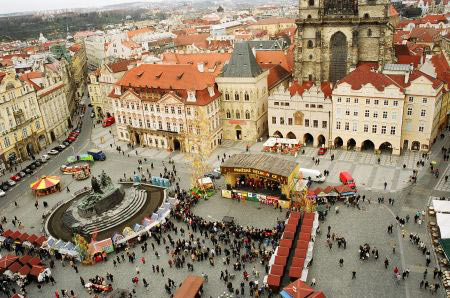



 Posted in:
Posted in: 


3 comments:
nice post
Beautiful Prague & beautiful pictures :)
there is a little noise on the night time pic, but nice pics all the same!
things to do in prague
Your pictures are gorgeous. Thanks for sharing them with us. A perfect holidays to Czech Republic will only be complete if can't visit Pargue, a beautiful place indeed!
Post a Comment